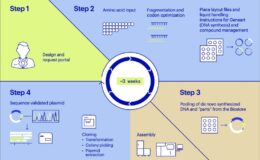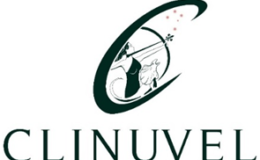
January means that it’s time for the J.P. Morgan Healthcare Conference, held each year in San Francisco. The meeting, which attracts thousands of biotech executives, investors, and analysts, typically brings with it big announcements from genomics and next-generation sequencing (NGS) companies. It is a week that every sequencing facility director loves and hates, noted Charlie Johnson, PhD, director of genomics and bioinformatics service at Texas A&M AgriLife Research.
This year, however, is predicted to be a deviation from previous years. Because 2022 brought a tsunami of NGS news—new companies and instruments flooding the market—few commentators are expecting the big announcements of years past. Rather, the NGS community seems ready to sit back and let the chips fall where they may.
But Complete Genomics—a subsidiary of China’s MGI—has one more piece of wood to chop. During the company’s presentation at JP Morgan, co-founder and CSO Rade Drmanac, PhD, announced the arrival of Complete’s full sequencing platform in the United States. The instruments, previously sold outside the United States under the MGI logo, will be sold for the first time in the United States through Complete Genomics, located in San Jose, CA. Drmanac explained that they decided to sell the instruments under Complete Genomics because the company has great name recognition, and a long history in the U.S. market—since 2006. The company wants to take advantage of, and pay tribute, to those attributes.

Complete Genomics launched its novel DNA NanoBalls (DNB) sequencing platform in 2008, and briefly enjoyed the limelight in the world of next-gen sequencing including the publication of three human genome sequences in 2009. But the company struggled after going public and was acquired by BGI for about $117 million in 2013.
This week’s announcement was very different from the launches of 2022: no former presidents on stage (Illumina) or rock bands performing (PacBio). But Complete Genomics is a very different company. The big news in 2022 came from new companies or new instruments. Complete is a veteran company, with a range of instruments, all of which have been battle tested in many big markets, including China, Japan, other Asian countries, Australia, and Europe. Now they are poised to enter the United States.
The instruments
At the heart of the instruments is Complete’s DNBseq technology, which combines DNBs—small, densely packed nanoballs of DNA generated by rolling-circle replication—and a patterned array of “sticky spots” to capture the DNBs. One advantage, noted Drmanac, is that only one copy of DNA is made, eliminating clonal errors, unlike other platforms.
The instruments now available in the United States are:
- DNBSEQ-T7—Complete Genomics’ flagship instrument. An ultra-high throughput sequencer with four independent flow cells (which can be started independently of one another.) With an output of 1–7 terabases (Tb) per day, it can produce more than 20,000 30X whole genome sequences in less than one year. This instrument (comparable to a NovaSeq) is available now.
- DNBSEQ-T10x4—Complete Genomics’ largest and highest throughput next-generation sequencer, available with a robotic arm with a data output of up to 18 Tb daily (180 genomes per day.) This is available now.
- DNBSEQ-E25—A portable sequencer with a low throughput of up to 7.5 gigabases (Gb) daily and a quick turnaround time—20 hours from DNA sample to FASTQ data. This product will be launched in the second quarter of 2023.
- DNBSEQ-G400C—A medium-throughput benchtop sequencer, comparable to Illumina’s NextSeq, launched in the United States last August.
All of the Complete platforms produce typical NGS short read lengths, or as the company calls them, massively parallel sequencing (MPS) reads. Accuracy is said to be comparable to the company’s competitors.
How much do the instruments cost? Complete Genomics declined to provide details, telling GEN that the selling prices for their instruments are “about 30% lower than comparable competitors’ instruments.” The company does offer that the sequencing cost on the DNBSEQ-T7 is $5 per Gb. However, in an intensively competitive market, price will be at the forefront of buyers’ minds.
“It’s great to see MGI finally on the market in the United States, especially given their broad portfolio that can essentially match Illumina machine for machine,” said genomics consultant Shawn Baker, PhD. But Baker agrees that the lack of price tags is an important omission. “Their announcement at J.P. Morgan was a little disappointing as there was only one new instrument, the DNBSEQ-E25. And, even worse, they didn’t include any pricing information. In this newly competitive market, price is going to be one of the top factors when making a purchasing decision.”
Johnson agrees. “The big disappointment is lack of pricing both for the sequencers and reagents. Without this and other details, I’m left with the question: why buy this system over Illumina?”
Try it before you buy it
Drmanac knows that there will be hurdles in getting started in a new country. It takes time to get traction, he said. But Complete Genomics is offering a program to let users try the machines risk-free with a “try before you buy it” plan. They have implemented a free three-month trial. “We’re confident and we want customers to experience our instruments,” explained Drmanac. If they don’t like them, they can return them, he said.
Johnson likes this idea. It’s novel, he said, and something he wishes other new sequencing companies would adopt. Complete Genomics is also the only sequencing company that he knows of that has an end-to-end high throughput automation solution, which he thinks is a plus.
Complete Genomics offers a long-read technology called Single Tube Long Fragment Read (stLFR) technology. In it, every read that comes from one molecule has the same barcode, allowing the reads to be grouped. Drmanac’s team published this technology in a 2019 Genome Research paper titled, “Efficient and unique cobarcoding of second-generation sequencing reads from long DNA molecules enabling cost-effective and accurate sequencing, haplotyping, and de novo assembly.” Kits for stLFR will also be available in the United States.
That said, the company seems to buck the long-read trend adopted by some other NGS companies. It tells GEN, “Although single molecule/long-read sequencing technology has overcome the limitations of NGS reads, it is still limited in applications due to more expensive hardware and much lower sequencing accuracy. Therefore, short-read, high-throughput sequencing technology is the main driving force for the popularization of large-scale commercial application of gene sequencing technology and will maintain the status of mainstream sequencing technology for the foreseeable future.”
Healthy competition
Drmanac is looking forward to researchers getting their hands on these instruments that “they were deprived of before.” Drmanac tells GEN, chuckling, that he believes “people are sort of waiting for us.” He likes the ecosystem of fair and healthy competition and providing a choice to customers. Let them decide what to buy!
The point is not necessarily to share an existing market, noted Drmanac. The market will grow; he predicts that the world will be sequencing 1,000 times more DNA in the next 10 years. Rather, it’s about enabling new, and different, sequencing. Even if a researcher has an existing system, they will need to expand, he said.
Drmanac is stunned by where the field is today. And he should know; he has been in the DNA sequencing world longer than most. He left Serbia in 1988 to follow his dream of making sequencing efficient and affordable. It was then that he proposed MPS for the first time. And, as the field continues to grow, it is offering a place for many different technologies, he said. “We need so many different technologies to crack the code. Because it’s a seriously complicated code in our genome.”














